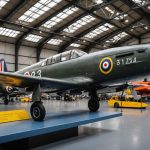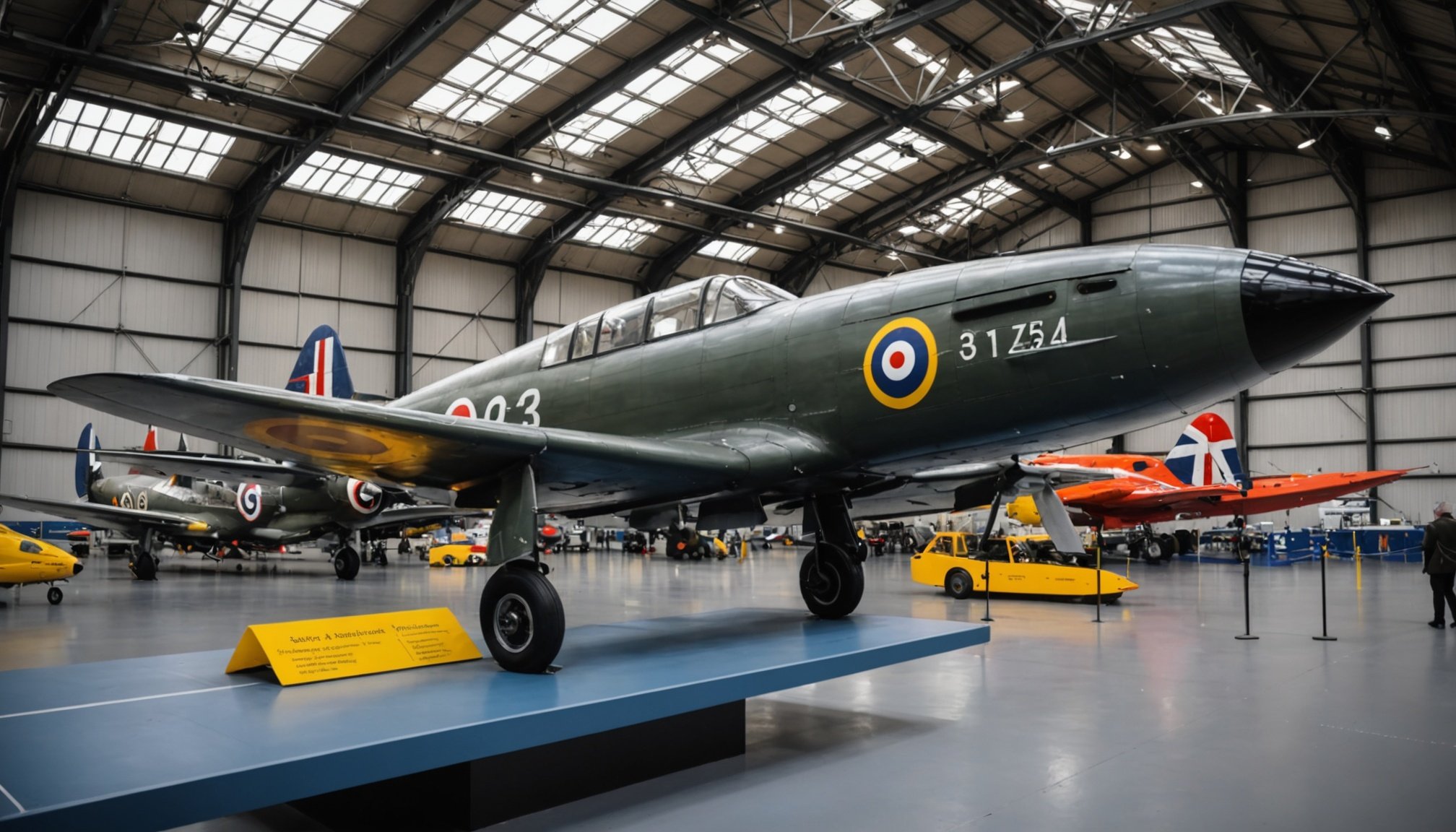Introduction to British Aviation History
British aviation has played an influential role in shaping global aviation. From pioneering aircraft designs to notable achievements in aviation technology, Britain’s contributions stand testament to their innovation and endurance. For enthusiasts and historians alike, understanding the historical significance of these advancements is crucial to appreciating the progress of aviation worldwide.
Preserving this rich legacy is paramount, and interactive exhibits prove to be an invaluable tool in this endeavor. These exhibits provide an engaging and educational experience, transforming history from mere information into a story visitors can both see and feel. They allow visitors to engage directly with the past, offering insights into the technological advancements and meticulous designs that have characterized British aviation throughout the years.
Topic to read : Journey Through Time: Uncover the British Monarchy’s Legacy with Engaging Guided Royal Palace Tours
When visiting various sites dedicated to this aviation heritage, guests can expect a comprehensive look into both the triumphs and challenges faced by pioneers. Museums offer interactive exhibits designed to captivate audiences and educate them on key events and technologies that have shaped modern aviation. Whether it is life-sized replicas or digital simulations, such displays aim to immerse visitors in the world of British aviation history, making it both an educational and memorable experience.
Top Interactive Museums for Aviation Enthusiasts
For those passionate about aviation museums, the UK offers some of the best destinations for exploration. These museums are not just about static displays; they boast interactive displays that enhance the visitor experience. One of the most renowned is the RAF Museum in London, where interactive zones let visitors engage deeply with history. Visitors can explore immersive cockpit experiences and witness aircraft restorations in real-time.
This might interest you : Exploring Authentic British Cuisine: A Photographic Journey Through Charming Rural Villages
Equally captivating is the Science Museum in London. The museum features the Flight Gallery, an area filled with hands-on activities that bring the dynamics of flight to life. Here, visitors can delve into the engineering marvels behind notable aircraft.
The Brooklands Museum in Surrey offers unique experiences revolving around the birthplace of British motorsport and aviation. Interactive workshops and simulators provide a taste of piloting iconic aircraft, making it a hit with both adults and children.
Educational experiences at these museums play a critical role in preserving and sharing aviation’s legacy. By engaging with these interactive features, visitors gain a more profound understanding of aviation history, fostering a deeper appreciation for technological advancements over the years. These immersive experiences ensure a memorable day for enthusiasts and families alike.
Family-Friendly Activities and Experiences
Exploring aviation history is not just for adults; family activities and interactive learning experiences are abundant across the UK’s top aviation museums. Tailored experiences ensure that visitors of all ages enjoy the thrill of going back in time. Museums such as the RAF Museum and the Science Museum offer engaging experiences that are both educational and fun for children.
Interactive displays are cleverly designed to cater to different age groups. Young minds can delve into basic aerodynamics with simple, hands-on activities that blend play with education. Older children and teens can engage in more complex simulations, offering them a chance to understand flight dynamics intricately. These engaging experiences make learning accessible and enjoyable.
For families, recommendations include participating in workshops that encourage creativity and collaborative problem-solving. Exhibits that allow participation in building model aircraft or engaging in simulated flights are popular, fostering not only a love for aviation but also teamwork and critical thinking skills. Thus, interactive learning becomes an avenue for families to bond, learn, and have fun in an enriching environment, ensuring a memorable visit for everyone.
Key Exhibits to Explore
When venturing into UK’s aviation museums, prepare to immerse yourself in a rich tapestry of historic exhibits. The chance to see notable aircraft like the iconic Concorde or Spitfire up close is a thrilling experience for any enthusiast. Such exhibits illustrate the engineering prowess and aesthetic elegance that British aviation is renowned for.
Exploring interactive elements within museums significantly amplifies visitor engagement. For instance, many displays allow for cockpit entry, enabling an authentic pilot’s perspective. This hands-on opportunity transforms curiosity into a tangible experience, bridging the past and present in a meaningful way.
Historical events are vividly brought to life through these exhibits, showcasing pivotal moments like the Battle of Britain. Dioramas, augmented reality features, and informative placards work together to provide comprehensive insights into these events. Visitors can delve into the stories and strategies that defined British aviation history, enriching their overall museum experience.
Whether you’re an aviation aficionado or a history buff, the combination of must-see exhibits and interactive features offers a unique opportunity to witness the evolution of aviation technology and its impact globally.
Exploring Outside the Museums
To truly appreciate British aviation history, exploring beyond the walls of aviation museums is essential. This journey into aviation heritage sites offers enthusiasts a deeper insight into the advancements and stories that shaped the field.
Many historical tours are available to guide visitors through these significant locations. These tours often include access to old airfields, historic airbases, and sites of pivotal aviation events. Expert guides provide narratives on the local aviation history, enhancing understanding and appreciation for the milestones achieved.
Guided tours can vary from walking experiences around preserved airstrips to comprehensive day trips that cover multiple sites, each rich with stories of aviation’s evolution.
Visitors can also indulge in outdoor activities at these heritage sites. Many locations offer interactive exhibits set in outdoor settings, where families can learn through team-based challenges and reconstructions of historical aircraft tasks. The outdoor experience complements indoor museum visits by offering a contrasting perspective and a chance to connect with the history where it unfolded.
For those eager to delve beyond museum walls, these aviation heritage sites provide a unique adventure through the landscape of British aviation history.
Practical Visitor Information
Visiting aviation museums offers a fascinating glimpse into the history of flight, and planning your visit effectively can enhance your overall experience. Visitor Tips are vital for a smooth, enjoyable day.
Firstly, be mindful of the opening hours, which can vary. Museums typically open from 10 AM to 5 PM, but checking their websites for any special event days is recommended, as some may have extended hours.
Admission fees are usually reasonable, with many museums offering family discounts. For example, the RAF Museum provides free entrance, while others like the Science Museum may have a nominal fee for special exhibitions. It’s worth exploring any discounts available for seniors, students, or groups to make your visit cost-effective.
To maximize your visit, consider the best times to explore these sites. Weekdays or early mornings often offer a quieter experience, allowing you to engage more thoroughly with interactive displays without the crowds. Additionally, taking time to research and inquire about guided tours or demonstrations can provide deeper insights, enhancing your appreciation of the exhibits. Planning ahead sets the stage for an enriching journey through aviation history.











